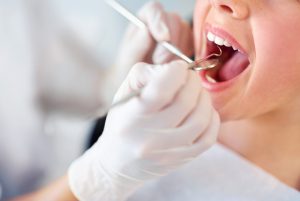How Your Bowling Green Dentist Helps Your Tooth Decay
September 12, 2016
 Dr. Derik E. Utz teach patients about tooth decay in his Bowling Green dental practice. Learn how a cavity develops and what you can do to prevent or this all too common oral health issue.
Dr. Derik E. Utz teach patients about tooth decay in his Bowling Green dental practice. Learn how a cavity develops and what you can do to prevent or this all too common oral health issue.
How Decay Happens
The American Academy of General Dentistry states that cavities affect almost all people at one time or another. What is a cavity? Bottomline, it is a hole in the mineralized outer layer of tooth structure called enamel. Untreated, dental decay advances into the deeper layer called dentin and even to the inner soft pulp which contains nerves, blood vessels and connective tissue.
Cavities start with acids secreted by oral bacteria called Streptococcus mutans. Found in everybody’s mouth all the time, this microbe feeds on the sugars and starches we consume. Food residues form soft plaque and eventually harden into tartar on and between teeth. The bacteria in those biofilms literally corrode tooth enamel, causing what we know as cavities.
Preventing Cavities is Best
Your Bowling Green dentist recommends preventive dentistry in the war against tooth decay. Dr. Utz would rather stop decay from forming rather than treating it. Prevention means oral examinations, digital X-rays (if needed) and hygienic cleanings to remove plaque and tartar.
During a six-month examination, Dr. Utz inspects for signs of decay and gum disease and also checks for the condition of existing restorations, a common site for tooth decay. Poor tooth alignment and bites (how teeth close together) encourage decay because crooked teeth are harder to keep clean. An oral cancer screening using the sophisticated handheld Velscope device rounds out the oral exam.
The dentist may advise plastic sealants or fluoride treatments for back molars. Both confer anti-cavity protection, and fluoride even helps to re-mineralize tooth enamel when a cavity first starts.
The dental hygienist removes plaque and tartar that at-home brushing and flossing miss. She scales tooth surfaces with manual and ultrasonic instruments for clean enamel and roots. She also teaches patients the right way to brush and floss.
The American Dental Association advises twice daily brushing. Kids and adults should use a soft brush and fluoride toothpaste. It advises daily flossing with whatever product you like and will use consistently. Waxed or flavored floss, interdental picks, and y-shaped flossers are all good choices.
Restoring Cavities
Dr. Utz uses tooth-colored filling material made of innovative composite resin. Bonded right to tooth structure for a durable restoration, composite resin looks natural and has none of the safety and aesthetic worries of dark amalgam fillings.
Additionally, the doctor uses porcelain crowns, inlays and onlays (partial crowns) or root canal therapy as needed to restore teeth with advanced decay, abscess or enamel injured in an accident. Dr. Utz works hard to save as much tooth structure that he can. While there are great tooth replacement options available today, nothing beats your own natural teeth!
Have You Had Your Check-up?
Contact Dr. Derek E. Utz to schedule your routine exam. You can prevent tooth decay, gum disease and other oral health threats. Achieve your best smile ever!
No Comments
No comments yet.
RSS feed for comments on this post.
Sorry, the comment form is closed at this time.